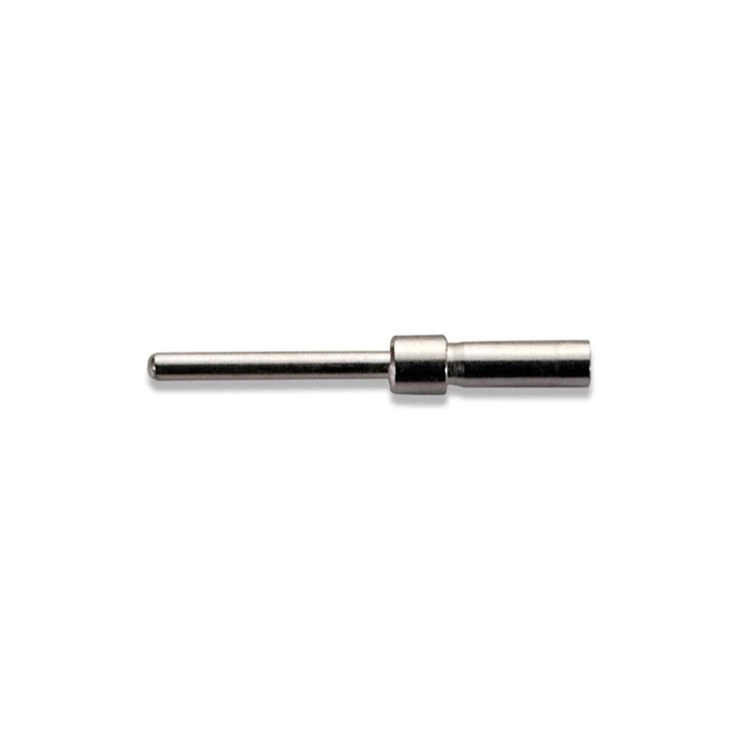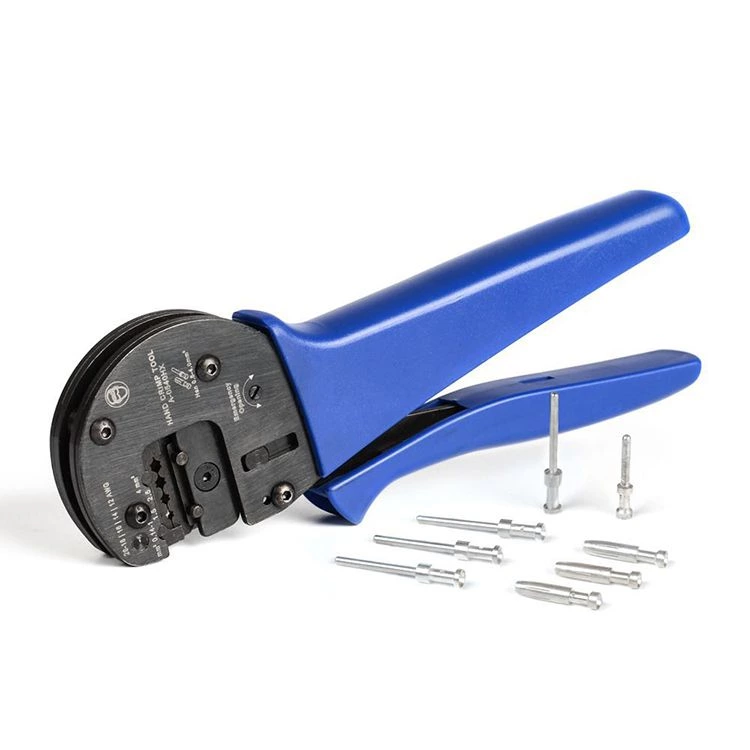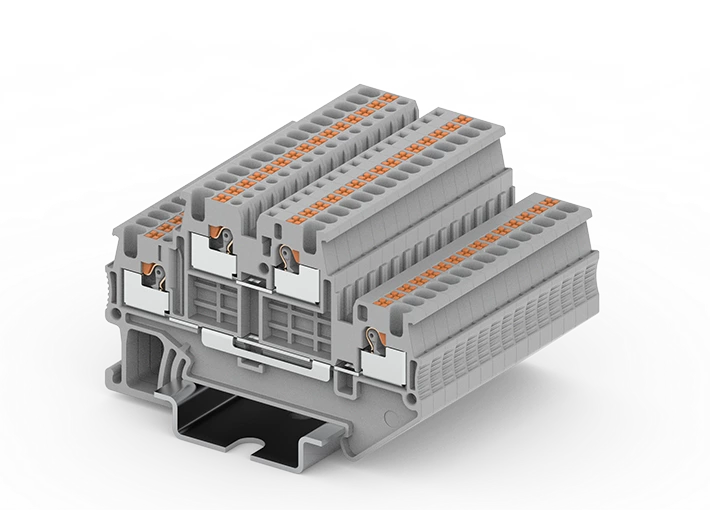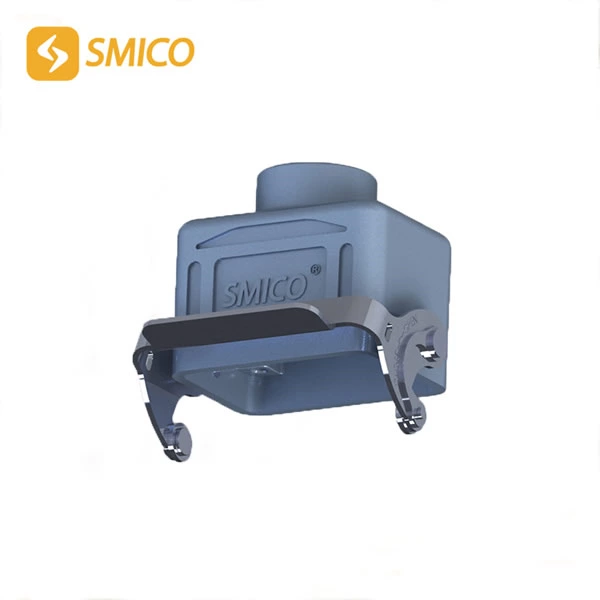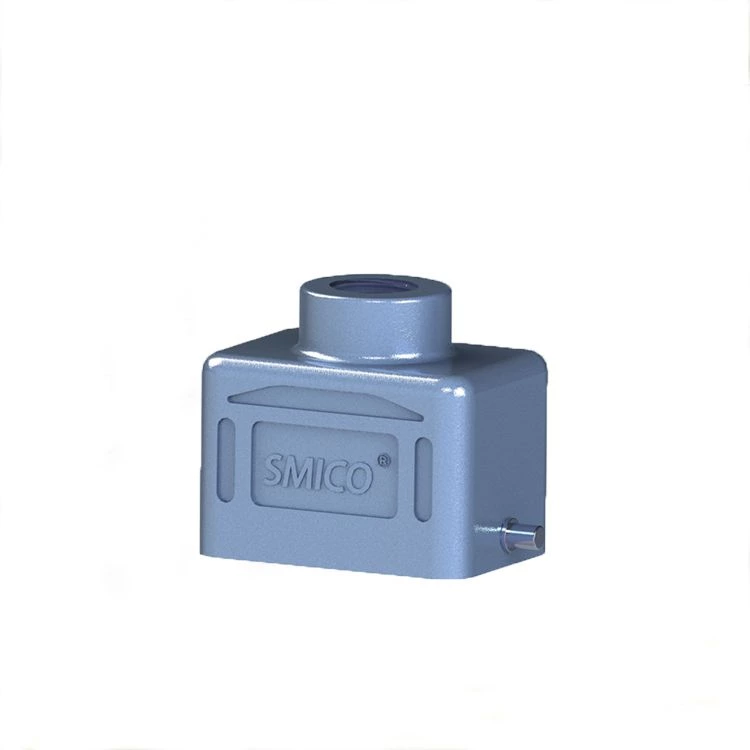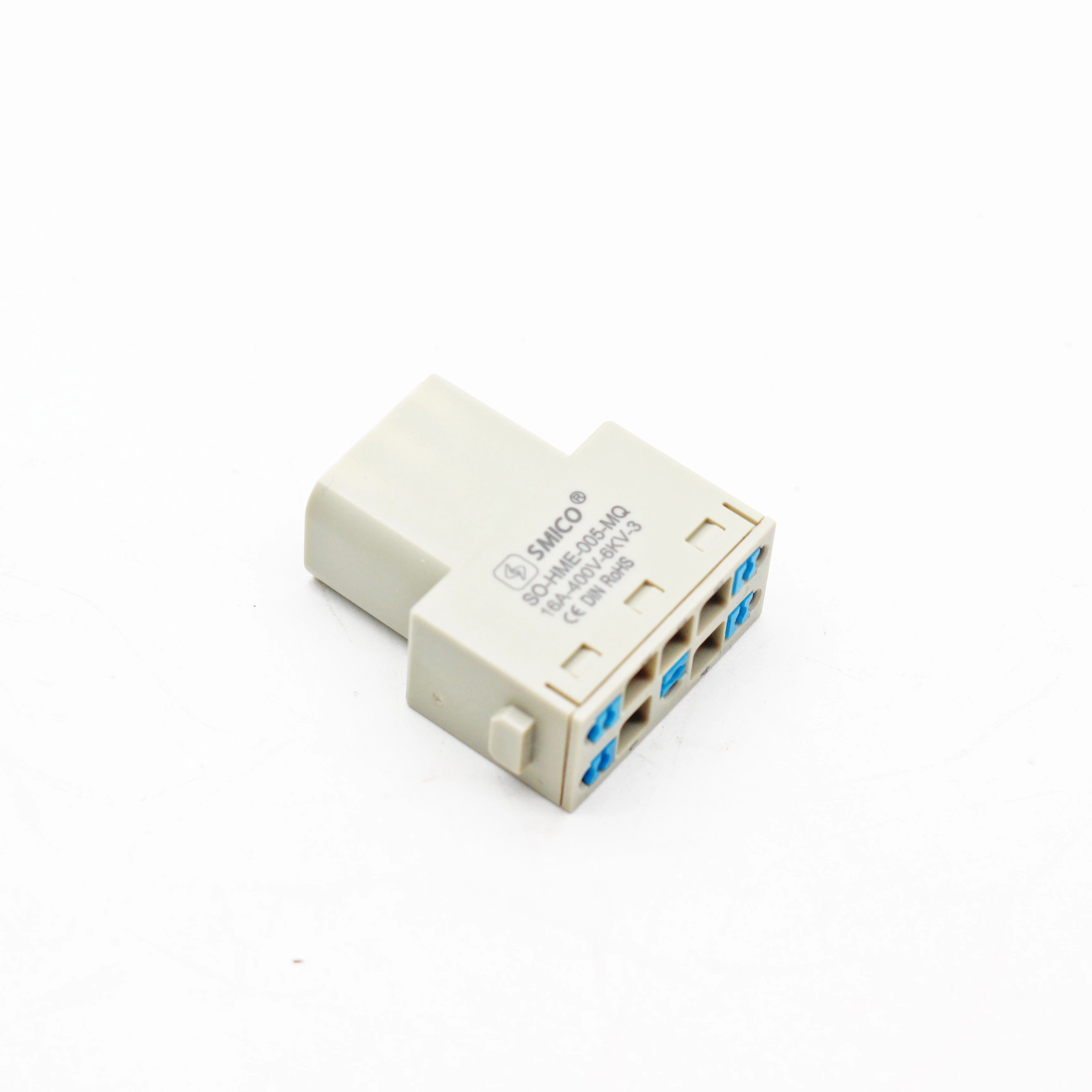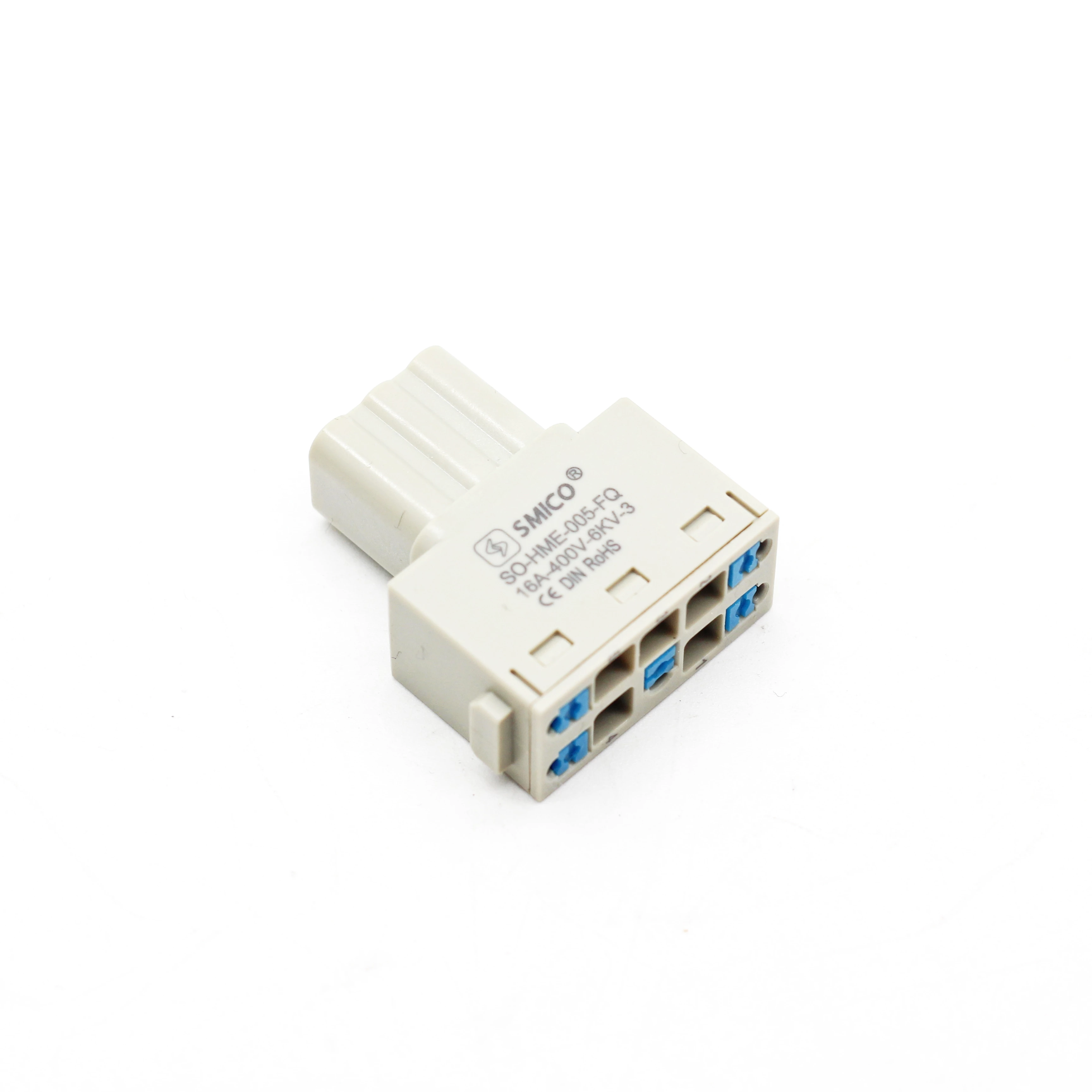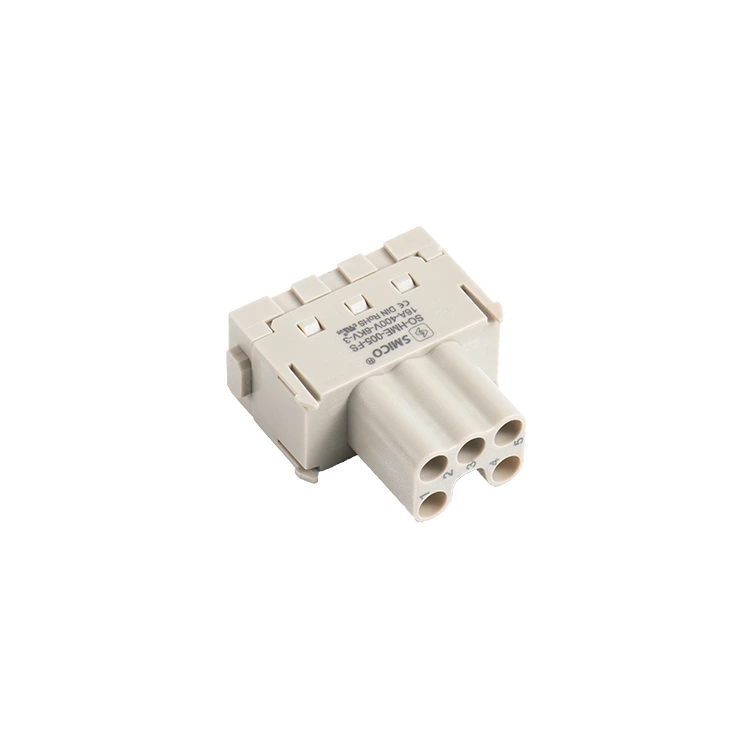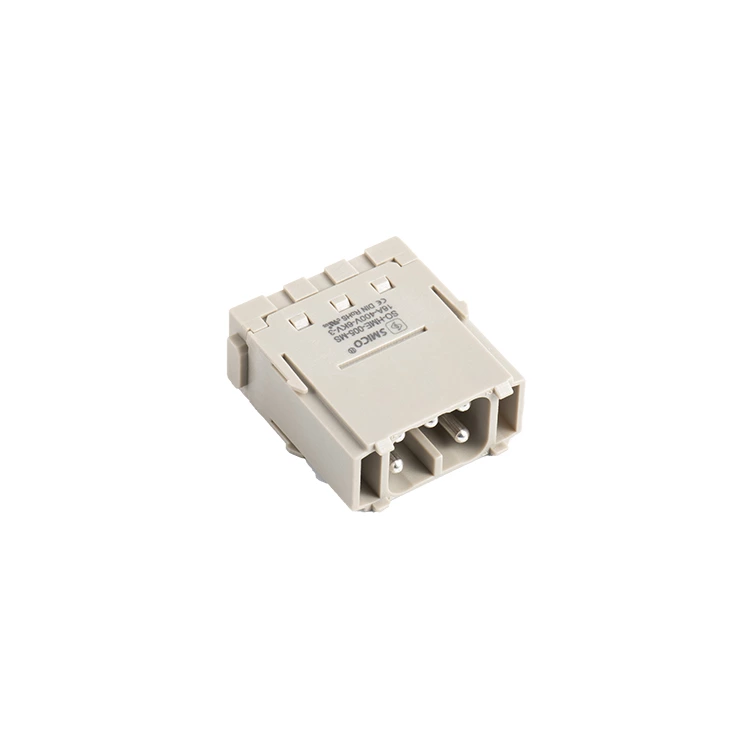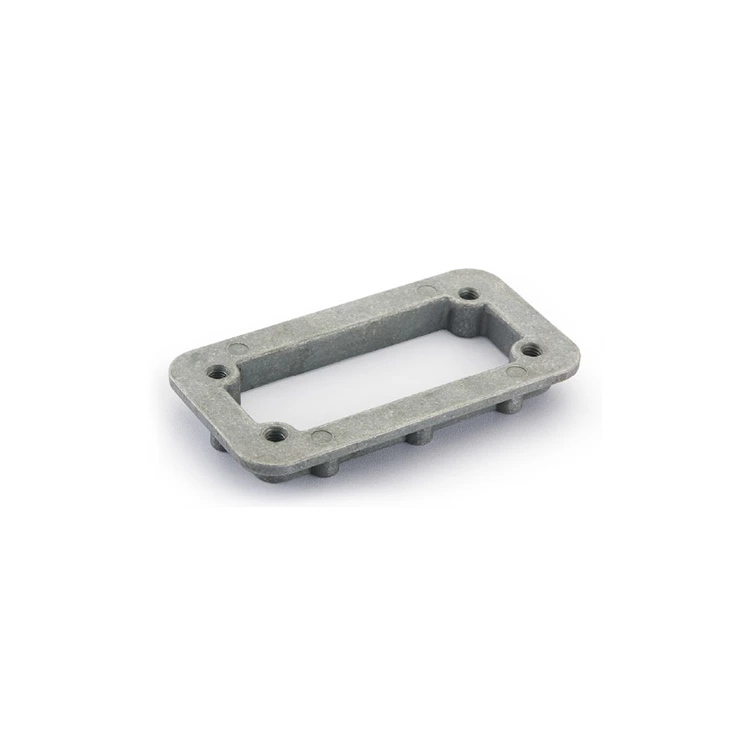Transmission Electron Microscopy Analysis Of Male Crimp Contact Interface
In order to study the bonding of metals at the male crimp contact interface, this paper conducted a transmission electron microscopy analysis of the internal structure at the interface. This analysis was performed on a Japanese JEM-2010 transmission electron microscope. The observation results show that the joint interface is composed of strip-shaped fine crystals perpendicular to the extrusion loading direction, as shown in Figure 3. The fine crystals of different directions that were crushed at the interface are interlocked with each other. The analysis of the diffraction lattice diagram of the interlocking crystal zone at the Al-Cu joint interface (Figure 4) shows that Al phase and Cu phase crystals with different lattice constants exist in the diffraction zone.
crimp contact Interface bonding morphology
(Al-Al TEM 200 kV ×12 000)
(a) Transmission electron microscope image (b) Electron diffraction image
(200kV×80000)(200kV60cm)
crimp contact pin Transmission and diffraction results of interface bonding area (Al-Cu)
2 Analysis and discussion
2.1 Diffusion is not an inevitable behavior of cold-pressed metal bonding
Although two metals can form a welded bond under many different conditions, not all welding methods have the conditions for diffusion between the two phases of weld metal. The hot-pressed welding process has a certain temperature and heat preservation, which is the condition for diffusion. Therefore, the flash welding, energy storage welding and friction welding joint interfaces measured in this paper have different degrees of diffusion behavior; in cold-pressed welding, "neither the welding area is heated, nor does sensible heat occur in the process of forming the welded bond", so there is no condition for diffusion. It is inevitable that the contact socket crimp interfaces of various metal matches measured do not show atomic diffusion behavior. According to the viewpoint of metal diffusion bonding, "under various conditions, two different metals can form a continuous metal bond, but diffusion is required in any case. Since diffusion can only occur in solid solution, it is only possible for the two metals to be combined into one when they have a certain amount of solid solubility." In fact, a large number of experiments conducted in this article show that metals without solid solubility can be welded. For example, Al-Cd, which is immiscible in the solid phase, and incoherent metals Al-Pb and Zn-Pb, which are immiscible in both liquid and solid phases, have achieved butt cold welding. Atomic diffusion cannot occur between immiscible metals. This article conducts various tests on such joints, and the results also show that there is indeed no mutual diffusion of atoms between them during the welding process.
Experiments and analysis show that the bonding process of cold-pressed metals has nothing to do with diffusion.
2.2 Bonding mechanism of metals in cold welding process
During cold welding, due to the forging pressure, the welded metals produce directional plastic deformation flow at the interface. On the one hand, the surface that affects the physical contact of the metals can be eliminated, and on the other hand, the metal grains at the interface are continuously squeezed and broken. As the extrusion process continues, the broken fine grains at the interface bite each other, so that the fine grains of the metals on both sides are in close contact. When the distance of atomic attraction is reached, the surface atoms of the fine grains form a bonding force, that is, the intergranular bonding of the fine grains. Because the interface has been "squeezed", the intergranular bonding mechanism of the intergranular bonding of the metal fine grains that bite during cold welding enables the incompatible metals without diffusion behavior to produce good weldability through the bonding of the grain boundaries.
2.3 Cold welding properties of metals with different hardness
In the experiment of this paper, the cold welding of metal combinations with different hardnesses shows that cold welding between Al-Cu, Al-Cd, and Al-Zn with the same hardness or small hardness difference is easy to achieve connection. During the cold welding process of these metal combinations, the two sides of the interface are easily crushed to form intergranular bonding of interlocking fine grains, and the cold welding performance is good. For combinations of metals with large hardness differences such as Al-Sn, Al-Pb, Zn-Sn, and Zn-Pb, the two sides of the interface show different deformation forms during the cold welding process. The metal on the side with high hardness has a small deformation at the interface and is difficult to crush and interlock with the fine grains of the metal on the other side with large deformation. Therefore, for cold welding between metals with high hardness differences, corresponding process measures must be taken to coordinate the deformation on both sides, so that the fine grains on both sides of the metal simultaneously deform and fragment to form interlocking fine grain boundaries, thereby improving their cold welding performance. The weldability of cold welding between metals with different hardness can be reasonably explained by applying the metal cold welding bonding mechanism explained above.
3 Conclusion
(1) There is no mutual diffusion behavior between atoms during metal cold welding.
(2) The bonding mechanism of metals in cold welding is the intergranular bonding formed by the interlocking fine crystals at the interface. The interlocking fine crystals increase the effective bonding area of the metal, making contact socket crimp have higher strength.
(3) Immiscible metals have cold welding properties.
(4) Metals of the same type or metals with a small hardness difference have good cold welding properties; cold welding between metals with a large hardness difference must adopt process measures to improve their cold welding properties.
